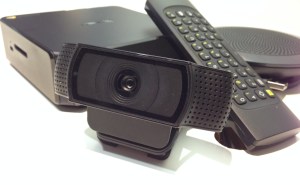
When you think ChromeOS, chances are the first thing that comes to mind are Chromebooks. Since 2012, though, Google and its hardware partners have also been quietly selling its Chromeboxes, the desktop equivalents of the ChromeOS laptops. Now that Chromebooks seem to have found their place, with very solid sales according to the latest data, the company is starting to put the Chromebox concept back into the spotlight and positioning it as a platform that goes beyond traditional desktop computing.
At the Digital Signage Expo in Las Vegas today, for example, Google is highlighting how Chromeboxes can power – you guessed it – digital signage. Making this work is pretty straightforward and goes a bit beyond the traditional kiosk mode Google has long enabled on ChromeOS. Developers can set ChromeOS up to run any Chrome App the moment the device starts.
This means a signage company could just hook a Chromebox up to a screen (or billboard on the side of the road – assuming billboards use standard graphics inputs) and run ads or power the menu screens in a fast-food store. Want to make these ads interactive? Just use a touchscreen. Many of these signage companies currently use proprietary systems and as the occasional blue screen of death clearly shows, some even still use old versions of Windows to run them.
This was possible before, but it’s only now that Google is actually focusing on these use cases.
 All it takes to enable this mode is a few extra lines of code. The install, updates, new code and any changes to the app can then be managed remotely from the Chromebook management console. Some schools that have deployed Chromebooks already use this feature for switching between the regular ChromeOS mode and apps for testing their students.
All it takes to enable this mode is a few extra lines of code. The install, updates, new code and any changes to the app can then be managed remotely from the Chromebook management console. Some schools that have deployed Chromebooks already use this feature for switching between the regular ChromeOS mode and apps for testing their students.
Last week, Google also unveiled its Chromebox for Meetings, which basically uses this same system but to run a video-conferencing platform in the background.
Until now, the only Chromeboxes available were Samsung’s models starting at $329. The Chromebox for Meetings, however, is made by Dell, and both HP and ASUS are about to launch their own versions soon. At CES, LG also unveiled a ChromeOS-based desktop, but this one is an all-in-one with a 21-inch display.
The Chromebox hardware has now also moved beyond basic Celeron processors and offers Core i7 CPUs and relatively high-powered graphics, which enable developers to run complex apps right on the desktop. With the help of Native Client, developers can even run games and apps that need high-end graphics on these devices.
With Chromebox for Meetings on the market and a round of fresh ChromeOS hardware about to hit stores, it makes sense for Google to start homing in on new use cases for this hardware. At just $180 for a basic Asus Chromebox, after all, the hardware is pretty affordable. But what will sell the system is likely the fact that they are easy to manage remotely and very unlikely to crash, and that it’s pretty easy to find developers who can write the kind of web apps that will run on them.
Google is clearly starting to position the Chromebox as a platform. I wouldn’t be surprised if the company decided to launch more nice products based on this platform in the future. There is no reason, for example, a Chromebox with the right interface couldn’t make a good device for powering the big screen in your living room, for example.
Read more : With Chromebooks A Success, Google Adds Focus On Chromeboxes

0 Responses
Stay in touch with the conversation, subscribe to the RSS feed for comments on this post.